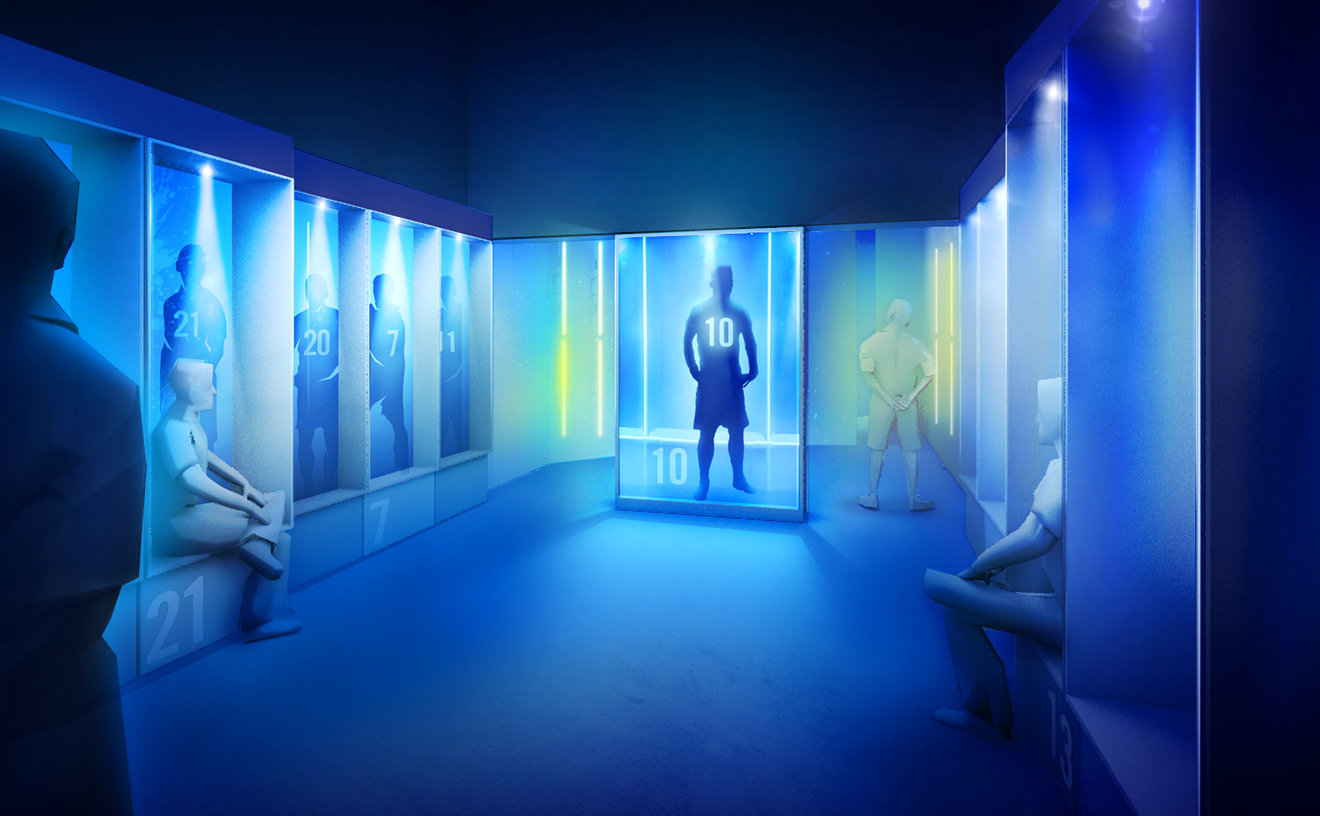In the Walgreen's storefront at the corner of Collins Avenue and 23rd Street in Miami Beach, an apocalyptic scene fills the windows. Everyday objects like a basketball and a plastic chair are strewn alongside seaside junk like empty bottles and discarded beach umbrellas. The store, located along a frequent path to the beach, is traveled by both locals and tourists.
This temporary installation, It’s Like The River, De Nile, is a collaboration by Francisca Twiggs and Reed van Brunschot. The Bass Museum of Art commissioned this work as part of its tc: temporary contemporary project that aims to explore the relationships between art and the environments in which they’re presented. It’s Like The River, De Nile, which debuted last month, will be on view through June 30, 2015.
Twiggs and van Brunschot met while working in the display department at Anthropologie in Miami. Twiggs, a Minnesotan who earned her BFA in painting at the University of Miami, now serves as the Senior Display Coordinator for the stores in town while working on her art. Van Brunschot, a Peruvian/Dutch American visual artist who earned her BFA from the Rietveld Academy in Amsterdam, describes her collaborator as, “a master craftswoman.” But, says, Twiggs, “Reed initially had an idea of a visual portrayal of the sea level rising and how it would effect the life and culture of Miami Beach.”
Van Bruncshot notes that she’s been researching Miami’s rising tides and changing landscape for the past year. She found the lack of awareness and action from both political figures and residents appalling.
“Climate change is not just some hippy chatter being thrown about; it’s something real and happening,” she says. “[I] was quite shocked at seeing that not many people are even aware of these upcoming and drastic changes coming to this environment. For those that are [aware], the snails pace of action being taken is quite alarming. That’s why it seemed perfect to start a dialogue with a work like this. But the overall deliberate ignorance on the matter is what brought on the title of the artwork.”
So when Jose Carlos Diaz, Curator of Exhibitions at the Bass Museum of Art, reached out about the prospect of populating this pseudo exhibition space, van Brunschot knew the time was right to work with Twiggs on an evocative piece addressing climate change.
“In our concept," van Brunschot explains, “we were really looking at what was exhibited here before and what this location meant in this site-specific time and place. Particularly being on Miami Beach, but also traditionally it being a storefront window not just a gallery wall, so a great place to communicate to the masses.”
And the Walgreen’s space in particular helps communicate that message. Its highly trafficked location and open spaces serve to reach new audiences for art and environmental awareness.
“It was important to us that we present a daunting topic in a more commercial and visually appealing way," says Twiggs, "after all, it is a commercial window. We didn't want the idea to become too abstracted and lose its theatricality. This was a way to present a seemingly scary topic in a lighter way as a means to educate the viewer/consumer and create a dialogue.
It’s Like The River, De Nile is the first installation for van Brunschot and Twiggs as a collaborative team. They plan to continue their joint and individual projects in the future. Until then, though, they hope It’s Like The River, De Nile will continue to catch attentions and change attitudes toward Miami’s environmental challenges.
“The beauty of public art is that you get to speak directly to that, the public. Whoever they are—despite their knowledge on art, ecological science, or even mass consumerism—you have to make something that speaks to them and says something,” says van Brunschot. “Whatever they take away from it, we hope it’s good and makes them think.”
It’s Like The River, De Nile, is on display through June 30 at Walgreen’s at 2300 Collins Ave., Miami Beach. For more information visit bassmuseum.org.
[
{
"name": "Air - MediumRectangle - Inline Content - Mobile Display Size",
"component": "19274298",
"insertPoint": "2",
"requiredCountToDisplay": "2"
},{
"name": "Editor Picks",
"component": "17482312",
"insertPoint": "4",
"requiredCountToDisplay": "1"
},{
"name": "Inline Links",
"component": "18711090",
"insertPoint": "8th",
"startingPoint": 8,
"requiredCountToDisplay": "7",
"maxInsertions": 25
},{
"name": "Air - MediumRectangle - Combo - Inline Content",
"component": "17482310",
"insertPoint": "8th",
"startingPoint": 8,
"requiredCountToDisplay": "7",
"maxInsertions": 25
},{
"name": "Inline Links",
"component": "18711090",
"insertPoint": "8th",
"startingPoint": 12,
"requiredCountToDisplay": "11",
"maxInsertions": 25
},{
"name": "Air - Leaderboard Tower - Combo - Inline Content",
"component": "17482313",
"insertPoint": "8th",
"startingPoint": 12,
"requiredCountToDisplay": "11",
"maxInsertions": 25
}
]










